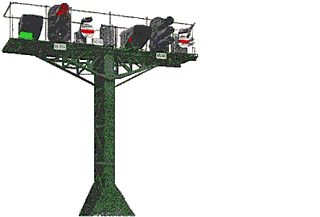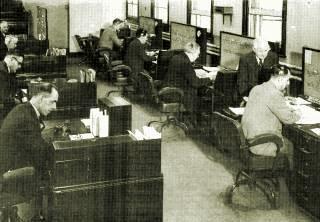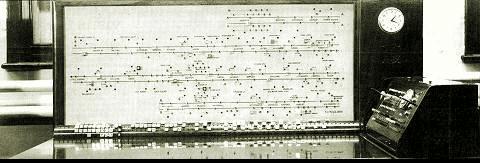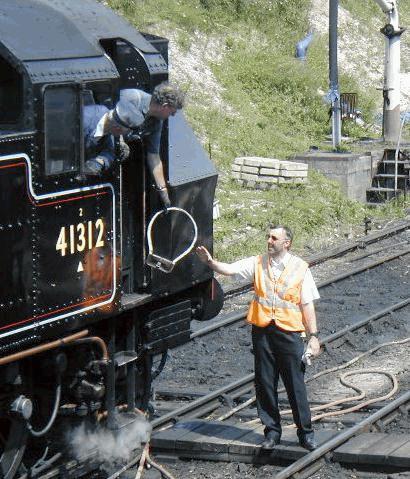Steam Corner 3
An Article for Riyan Productions

By B. L.. Cann


In the earliest stages of railway development, signaling as
such didn't exist. It was a necessity as speeds and infrastructure increased,
with a primitive "Ball and Chain" design being the first of many systems to
be employed. Various different designs of signaling were tried, some with more
success than others, until the more familiar upper / lower quadrant signals
came into being.


These weren't the answer to all problems, however, as pointwork was still
a separately controlled item. Interlocking of points and signals was necessary
in order to gain a high degree of safety on a rapidly growing system. The
first employed method was a mechanical arrangement which served it's purpose
well, but made heavy weather of a signal-man's job due to the resistance of
the linkages. It wasn't until much later that the first electrically operated
pointwork and associated signaling was introduced, providing a convenient
"interlocking" without the grunt. This was a god-send to signal-men at major
junctions and termini, where the going could get hard.


The "Block" system was another safety feature, which was based on the principle of
"No other train to be allowed access to a block already occupied", which naturally
provided a safe working distance between trains. Typically, this would be invoked
by Telegraphy, which the signal-men also had to understand, in order for the
system to work. In a lot of cases, signalboxes had their floors highly polished to
allow the signal-man to "skate" across to the telegraphy equipment with ease.
Today's equipment is now so far removed from the hands-on system, with push-
button control, colour light signals, track circuitry, and route display panels
readily showing train positions.



Single line working had a simple safeguard - that of a token, which was swapped
between loco crews either by the signal-man or the station master. Without this
token, a train wasn't allowed access to the section, as a train was already
occupying the line. This is still one of the safest methods of single track operation.

A signal-man's life is still an isolated one, though for different reasons now.
Whereas signal boxes were placed at regular intervals because of operating
difficulties (heavy linkages), they're now controlling vast stretches of track-work,
and with it several trains at any given time.

AWS, an advanced warning system, had been devised and employed during the
latter days of steam haulage on the early Diesel locos. Primarily, the object of this
system was to provide an emergency brake automatically if the driver failed to
answer the prompt, hence bringing the train to a halt safely.













